I took a look around both parks to see what I could find. At the entrance to Collect Pond park on Lafayette and Leonard streets, there is a rat box right under the park sign.
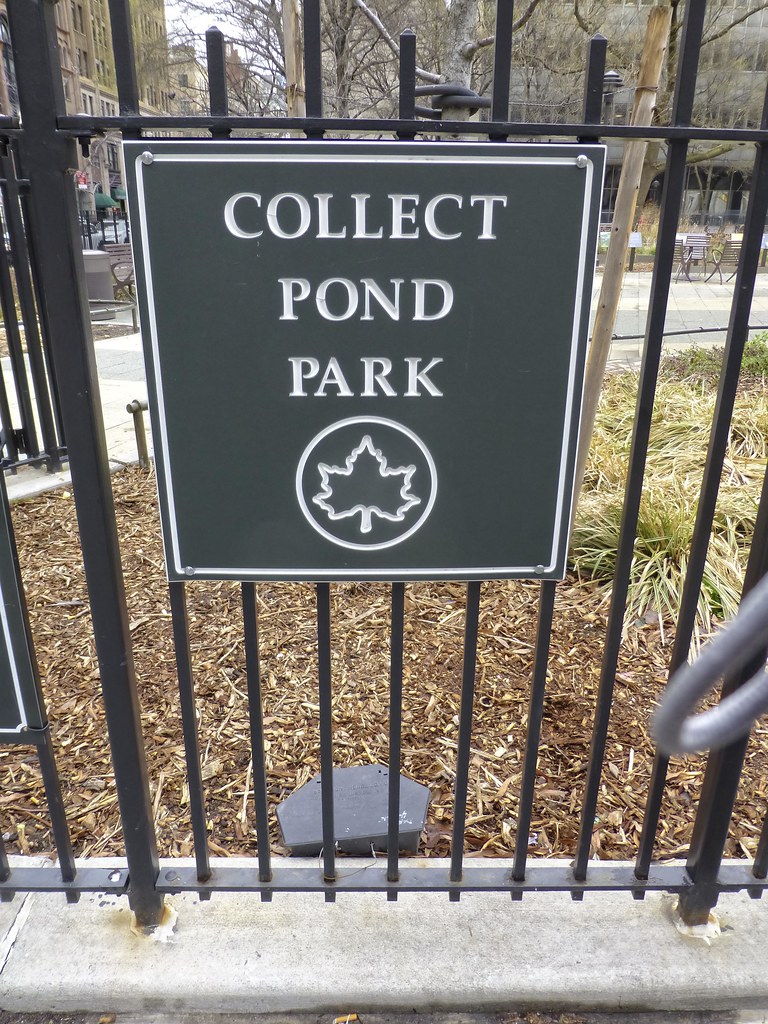
Along the Leonard side of the park, rat boxes are placed every so often, with the Department of Health right across the street. The hawks had a nest on an air-conditioner on this building, facing the park.
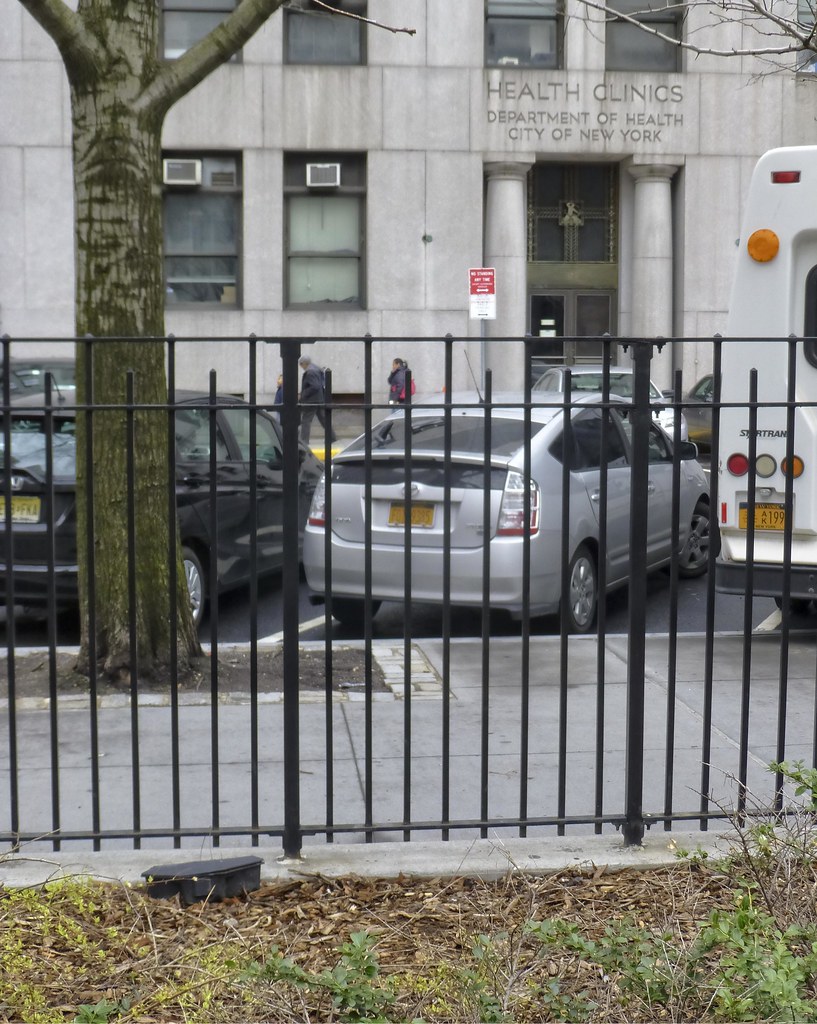
There are no signs in this park about pest control and I don't know how long these rat boxes have been there.
A block away, over at Columbus Park, pesticide notices are prominently posted. This is a sign from the Parks Department dated March 5, 2016. It's posted at the playground on the Worth Street side of the park.
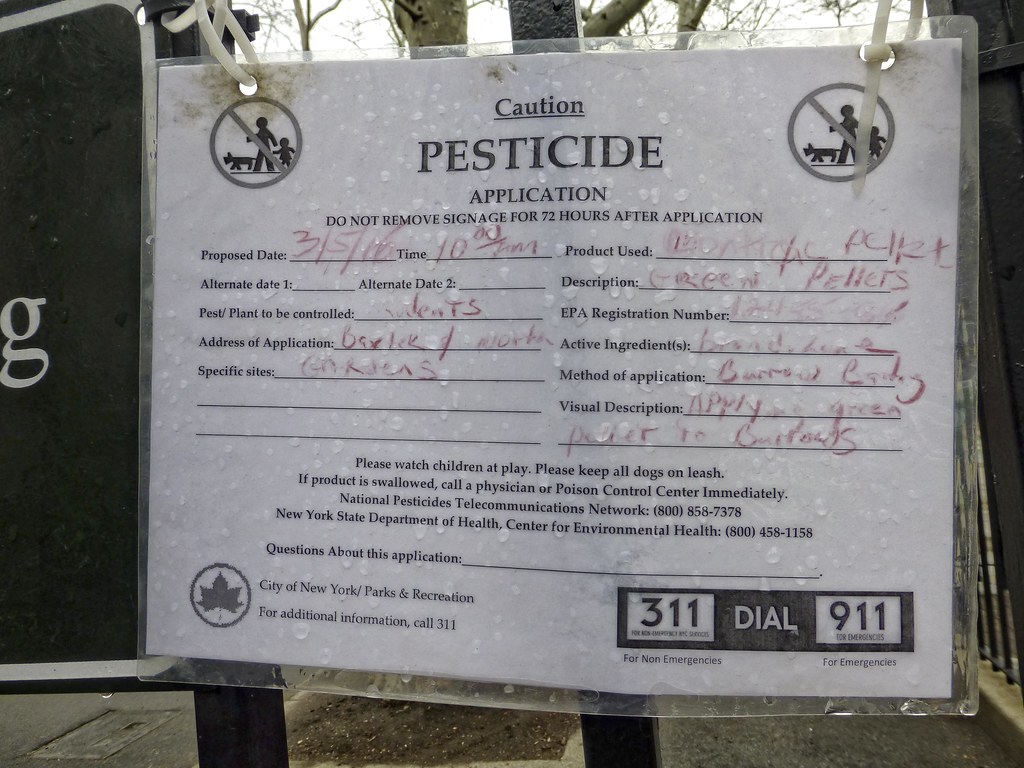
I can't make out the name of the poison, but this notice is for green pellets in the gardens.
Then we have these signs, posted by the Department of Health. This one is at the Mulberry Street entrance to the playground and bathrooms.
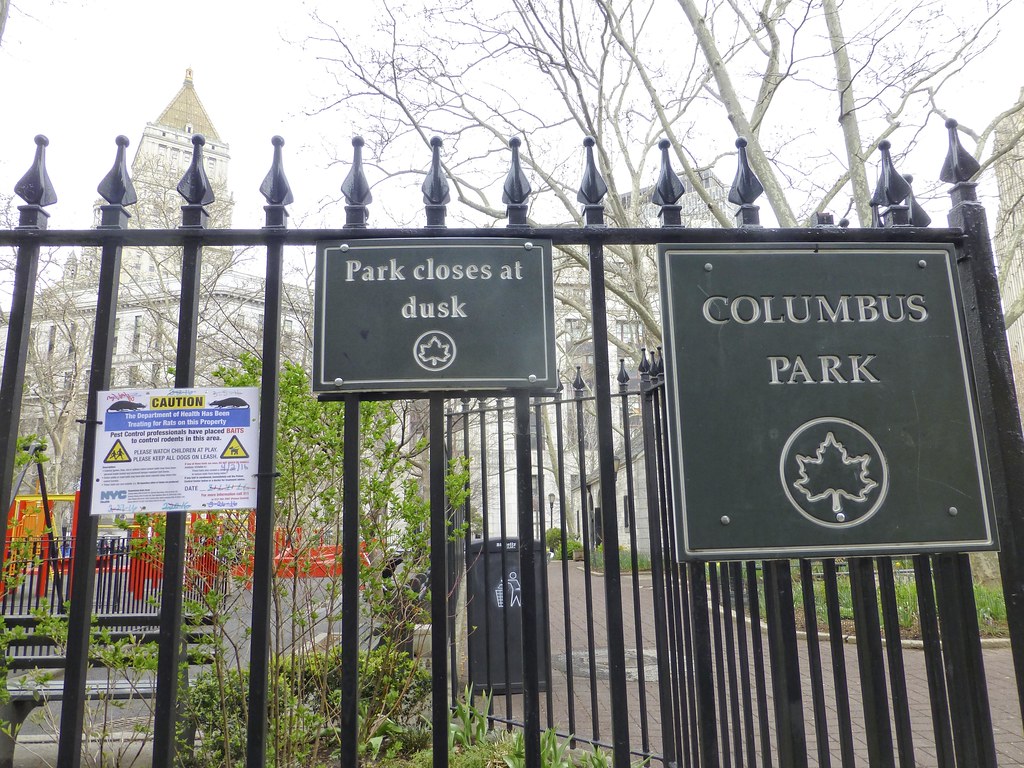
The dates of baiting on this sign are:
February 20, 2016
February 27, 2016
March 5, 2016
March 12, 2016
March 14, 2016
March 19, 2016
March 26, 2016
April 2, 2016
Is it me, or is this an awful lot of baiting?
This sign is on the Baxter Street side, with the city administrative building in the background.
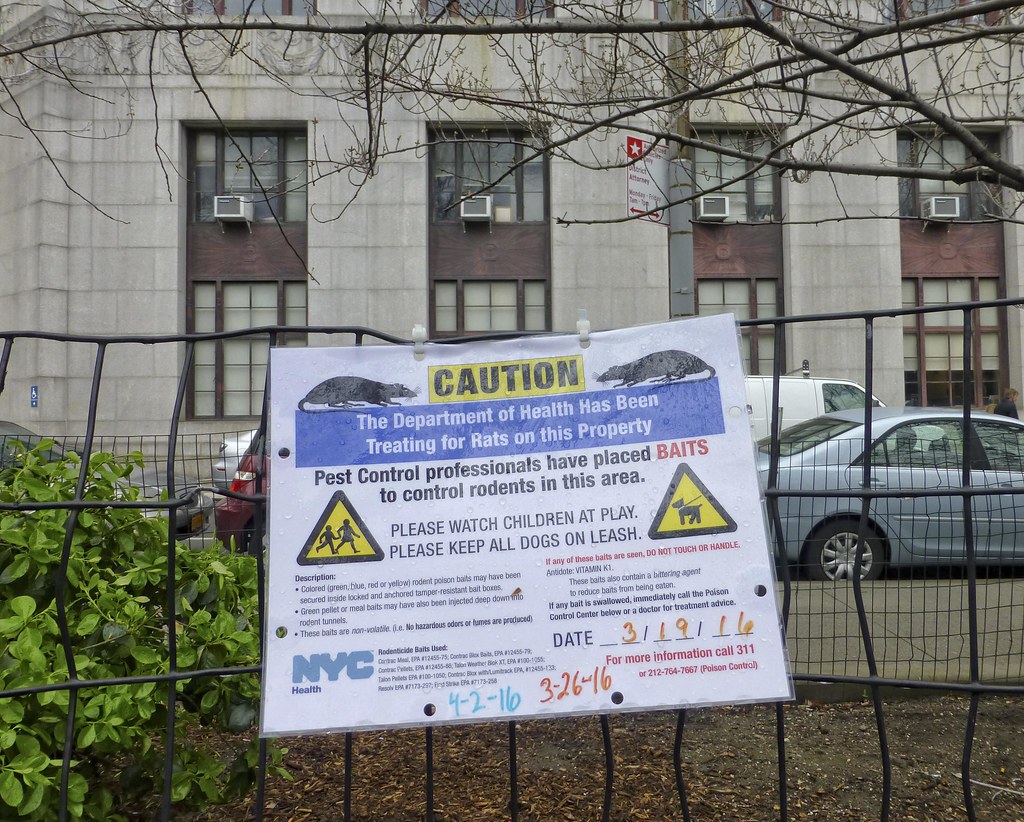
All the dates on the previous sign have not been recorded on this one. The dates are listed as:
March 19, 2016
March 26, 2016
April 2, 2016
A closer look at the sign:

Brand names of the listed rodenticides:
Contrac
Talon
Resolv
First Strike
Contrac and Resolv use Bromadiolone as their active ingredient. It's an anticoagulant, causing its targets to bleed to death internally.
Talon's primary ingredient is Brodifacoum, another anticoagulant.
First Strike uses Difethialone, which has been banned by the EPA for residential use. So why is is allowable in a public park?!
The dead hawk has been sent to the New York State Department of Environmental Conservation for a necropsy to determine the cause of her death. If/when I know the results, I will post an update. It seems apparent to me she died of poisoning. Regardless, I don't understand how it can be at all safe or healthy to have so much poison in a park and playground where there are wild animals, dogs and children.
Please take the time to call, email or send a letter to our City Council about this issue. It can be any council member, but the one for this area is Margaret Chin:
District office:
Chatham Green 165 Park Row, Suite 11
New York, NY 10038
Phone: 212-587-3159
Fax: 212-587-3138
Legislative office:
250 Broadway, Suite 1882
New York, NY 10007
Phone: 212-788-7259
Fax: 212-442-1563
Email: chin@council.nyc.gov
It is helpful to provide constructive ideas for alternatives to using poison, such as snap traps, or educating people about cleanliness in the park. Columbus Park does have several of these rat-proof solar-powered trash compactors:
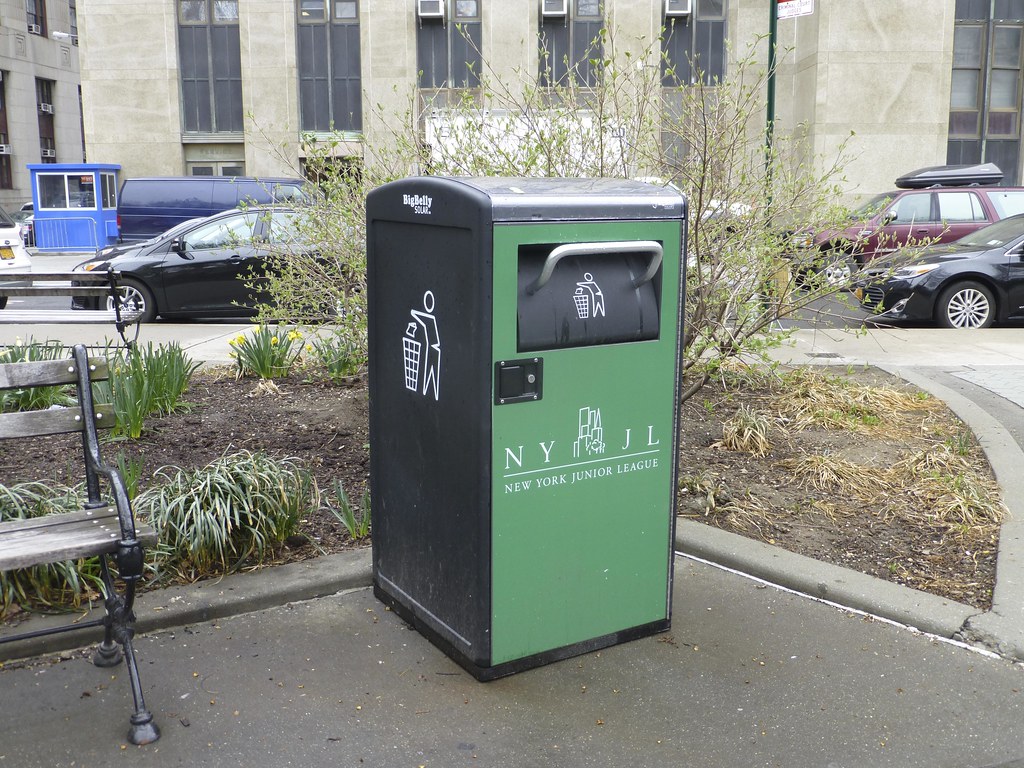
I think these are great, but they're only effective if people use them.
For information on alternative (non-poisonous) pest control, check out Raptors Are The Solution (RATS). Their website contains a lot of helpful information including ways to take action in your community.
These are lovely, heart-rending photos, Laura. I feel the loss each day when I walk out my door and know I won't see them in the park. Have not seen the boy either, since the morning she died - though one of the security people at the family court building said he saw him hunting in Collect Pond Park the following day.
ReplyDeleteOh rats (and I mean another expletive here, but rats kind of works). This is so unbearably sad. Hawks are so adaptable. Chased out of their habitat, they have made urban life work. Except for humans and their rat poison, Big chemo, pharma, and oil are doing their best to ruin humanity and our wildlife. Thanks for your beautiful blogs.
ReplyDelete—GhentArt
This is so heartbreaking!
ReplyDeleteWhere are the wildlife rangers when you need them?
To their credit, the rangers were contacted Wednesday and someone came by to assess the situation. At that time, the hawk moved too high in the tree for rehabbers to be able to reach her, and it was decided to wait until morning to see if she improved, or came down lower so she could be reached. Sadly, things did not go that way.
ReplyDeleteOy. So so sad. And I'm sorry you had to watch this tragedy unfold. I hope the male bird is okay. Will he possibly find another mate?
ReplyDeleteHe'll find another mate, although it's doubtful he'll nest this year. As the danger is still present, I'm hoping he decides to leave the area and go somewhere safe.
ReplyDelete